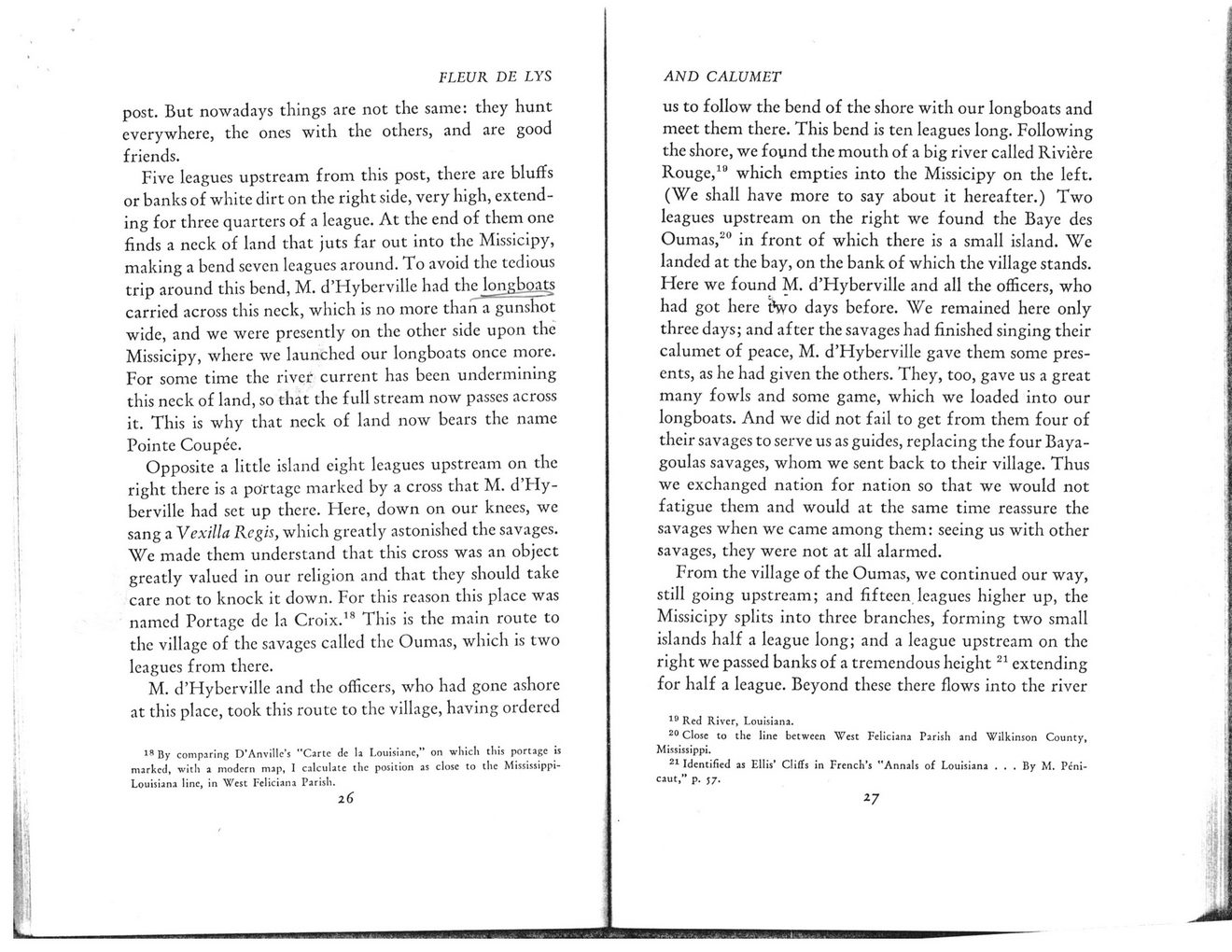This text was obtained via automated optical character recognition.
It has not been edited and may therefore contain several errors.
FLEUR DE LYS post. But nowadays things are not the same: they hunt everywhere, the ones with the others, and are good friends. Five leagues upstream from this post, there are bluffs or banks of white dirt on the right side, very high, extending for three quarters of a league. At the end of them one finds a neck of land that juts far out into the Missicipy, making a bend seven leagues around. To avoid the tedious trip around this bend, M. d’Hyberville had the longboats carried across this neck, which is no more than a gunshot wide, and we were presently on the other side upon the Missicipy, where we launched our longboats once more. For some time the river current has been undermining this neck of land, so that the full stream now passes across it. This is why that neck of land now bears the name Pointe Coupee. Opposite a little island eight leagues upstream on the right there is a portage marked by a cross that M. d’PIy-berville had set up there. Here, down on our knees, we sang a Vexilla Regis, which greatly astonished the savages. We made them understand that this cross was an object greatly valued in our religion and that they should take care not to knock it down. For this reason this place was named Portage de la Croix.18 This is the main route to the village of the savages called the Oumas, which is two leagues from there. M. d’Hyberville and the officers, who had gone ashore at this place, took this route to the village, having ordered 1R By comparing D’Anville’s "Carte dc la Louisiane,” on which this portage is marked, with a modern map, I calculate the position as close to the Mississippi-Louisiana line, in West Feliciana Parish. 26 a AND CALUMET us to follow the bend of the shore with our longboats and meet them there. This bend is ten leagues long. Following the shore, we found the mouth of a big river called Riviere Rouge,18 which empties into the Missicipy on the left. (We shall have more to say about it hereafter.) Two leagues upstream on the right we found the Baye des Oumas,20 in front of which there is a small island. We landed at the bay, on the bank of which the village stands. Here we found M. d’Hyberville and all the officers, who had got here t?wo days before. We remained here only three days; and after the savages had finished singing their calumet of peace, M. d’Hyberville gave them some presents, as he had given the others. They, too, gave us a great many fowls and some game, which we loaded into our longboats. And we did not fail to get from them four of their savages to serve us as guides, replacing the four Baya-goulas savages, whom we sent back to their village. Thus we exchanged nation for nation so that we would not fatigue them and would at the same time reassure the savages when we came among them: seeing us with other savages, they were not at all alarmed. From the village of the Oumas, we continued our way, still going upstream; and fifteen leagues higher up, the Missicipy splits into three branches, forming two small islands half a league long; and a league upstream on the right we passed banks of a tremendous height21 extending for half a league. Beyond these there flows into the river 10 Red River, Louisiana. 20 Close to the line between West Feliciana Parish and Wilkinson County, Mississippi. 21 Identified as Ellis’ Cliffs in French’s "Annals of Louisiana ... By M. Peni-caut,” p. 57. z7

Penicaut Narrative Document (019)